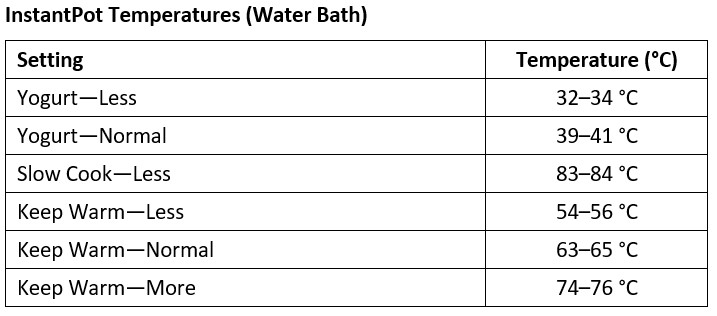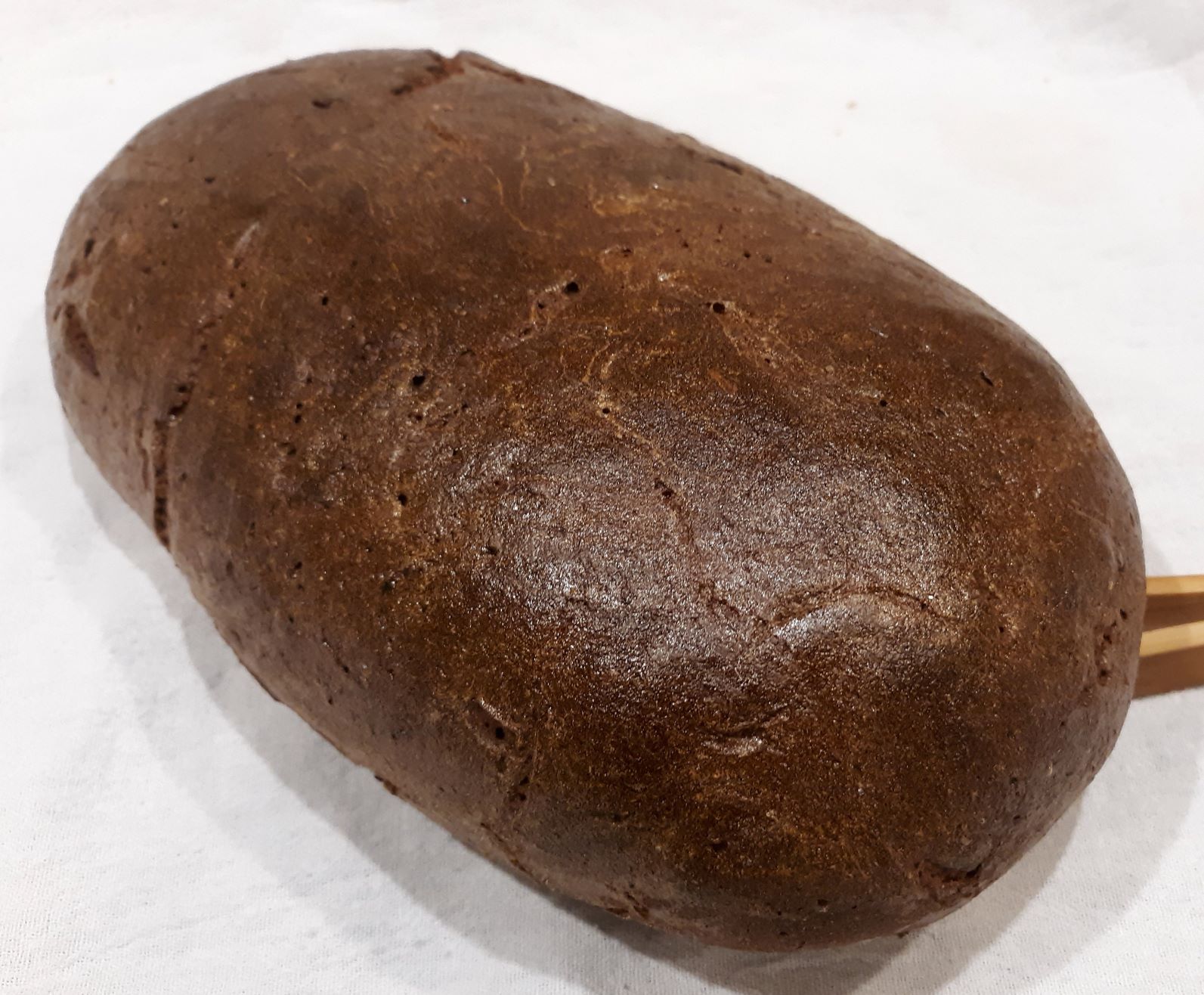I finally screwed up enough courage to attempt the Latgalian Rye from Stanley Ginsberg’s website. It’s a more complicated recipe with several steps at elevated temperature. But @Econprof, @Martadella, and @squattercity have all made some beautiful looking breads.
I don’t have a Brod & Taylor proofing box, so I had to improvise using appliances that I do own. The specifications page for the InstantPot Duo showed some temperature ranges that might work for the elevated temperatures for the scald and sour-scald in the recipe. Not wanting any surprises during the recipe, I measured the temperature of a water bath at some of the settings of the IP:

The Keep Warm and Yogurt temperatures looked most promising.
I scaled down the recipe to 1200 g because I wasn’t sure how my Bosch Compact would handle the full dough. The first day is preparation of the scald and a stiff rye sour sponge. The sponge was mixed according to the recipe using whole rye flour (Breadtopia) and refreshed rye sour culture (aka Vaal).
The scald has pale rye malt (Canada Malt via NYBakers), whole rye flour, and ground caraway (Penzey’s). Hot water was added and these were mixed in the IP and set at Keep Warm-Normal. The mixture was to be held at 65 °C for 16–18 h, but after ≈45 min, the temperature was at 68 °C. Fearing overheating during the unattended overnight period, I set the IP to Yogurt-Normal. I think the thick nature of the scald caused the bottom to overheat. In the morning, I set the IP to Keep Warm-Less and that setting gave 53–55 °C for the remainder of the heating period.
At this point, I decided to deviate from Ginsberg’s instructions and follow the Latvian recipe as described by Sergey and @Martadella (Latgalian Rye). I felt that heating the sour-sponge at 55 °C would kill off most of the LAB and yeast. The Latvian instructions add the sour sponge to the scald at ≈50 °C and hold for 3 h without mixing and allowing the temperature to fall to 28–32 °C. The sponge is then mixed into the scald and held for another 3–4 h at 28–32 °C. I followed this method using the Yogurt-Less setting. I did find that the stiff sponge was difficult to incorporate into the thick scald, but I tried to smash it in as much as possible.
The next step adds yeast to the mixture to boost the leavening. I added SAF IDY, mixed well, and held overnight at ≈27 °C. The next morning, it was very bubbly and had pH 3.5. It also appeared to have hard particles as if the IDY had not dissolved. I will follow @Martadella’s method of pre-dissolving the IDY next time.
No changes were made in the final dough mixing and shaping. I used a sprayer to moisten the dough instead of brushing with water. Proofed for 46 min. Baked for 30 min at 250 °C and for 15 min at 200 °C; applied cornstarch glaze and baked for 3 min. It smelled wonderful while baking—sort of apple-malty(?).
The waiting before cutting is sooooo difficult…
